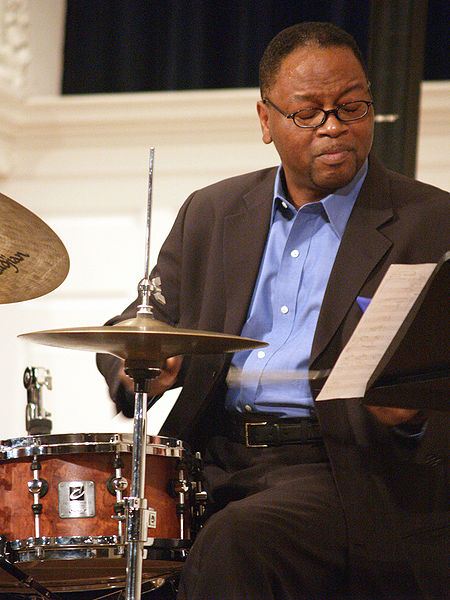Audio clip: Adobe Flash Player (version 9 or above) is required to play this audio clip. Download the latest version here. You also need to have JavaScript enabled in your browser.
Download the transcription: Drums
Sea Changes is an original composition from pianist Tommy Flanagan and serves as the title track from Flanagan’s 1997 trio date featuring bassist Peter Washington and drummer Lewis Nash. The tune itself is a simple 12-bar form that evolves from a bouncy island groove on the in head to a straight-ahead swing feel for a majority of the soloing. Prior to the out-head, Nash trades two choruses with Flanagan, both of which are transcribed here.
One hallmark of Nash’s playing, evidenced on many recordings and appearing in both choruses here, is his dedication to a particular rhythmic theme. The first two bars of each chorus comprise a phrase that is then repeated in the third and fourth bars. When solo space is confined, as in trading situations, musicians often overload their space without a continuous idea. In this particular instance, Nash uses precisely one third of his solo to state a restate a phrase. Well done.
Nash might often be described as a ‘melodic’ player, and this, too, is present in these two short solos. Melodies are created from notes and space, and while at first glance there may not appear to be many spaces, or rests, in these transcriptions, further analysis of the first four bars of each chorus shows that while other limbs might still be playing, the emphasis, or melody, might be in another voice on the drums and exhibit a tactful use of notes space. For example, a look at the first four bars of the first chorus shows a majority of notes on the snare drum. Their purpose, however, is to merely keep the rhythmic engine moving while the bass drum and ride cymbal outline this improvised melody. In the second chorus, it is the ride cymbal that assumes engine duties in the first four bars while the snare drum and bass drum create a melodic counterpoint that is very singable.
There are other rhythmic and melodic intricacies within these bars, but instead of reading about them, take a look and listen and discover them for yourself!
—-
Thanks to Reid Kennedy for this excellent transcription and analysis!
Visit Reid’s website here: http://www.reidkennedy.com

nice one. great solo and analysis.